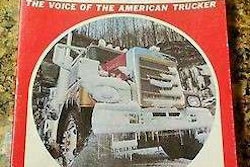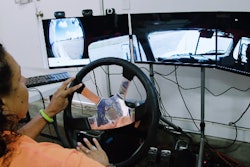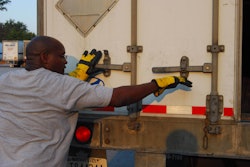In the wake of the FMCSA’s listening session early this week on the subject of highly automated commercial vehicles, Senators Susan Collins (R-Me.) and Jack Reed (D-R.I.) have asked the Government Accountability Office to look into several related topics. The chairman and ranking member, respectively, of the Transportation, Housing and Urban Development subcommittee of the broader Senate appropriations committee want GAO to “examine the impact self-driving trucks will have on the two million Americans who currently work as truck drivers and the communities where they live,” according to a press release issued yesterday.
Three key questions were identified in a letter to GAO penned by the Senators:
1. What is known about the speed at which automated vehicle technology may be adopted by businesses to replace the current fleet of vehicles used to transport goods and deliver services? To what extent is the adoption of this technology expected to affect employment levels in related occupations?
The speed at which the technology is being developed was remarked upon at least in part during the Monday listening session. Fred Kovall, for instance, noted at this point, watching developments, he didn’t “doubt we’ll get to a point that the truck can go down the road safely without an operator” in fact in the cab. At once, he noted, maybe “the operator is in another state” like a military drone pilot.

Tim Lafon of the Volvo Group urged everyone involved to “be realistic — there’s a long way to go in terms of fully [automated units] operating on highways.”
Perceptions of the speed of development have in part been driven by P.R., including the now-infamous automated-beer-run video from the folks at Otto/Uber this past year, which featured multiple daylight takes (the actual run occurred overnight and with the copious presence of Colorado state patrol) of the rig’s driver getting up from the driver’s seat, reading in the sleeper and the unit rolling driverless among cars on a highway.
Former driver and current MCO Transport safety manager Danny Hefner remarked that, “as a citizen, [the video] really put me off, and as a safety director, it also brought a lot of things to my mind.” As I wrote in Tuesday’s story from the hearing, Hefner wondered at the ability of systems to maintain control in the event of a steer-tire blowout or other critical situation.
None other than former FMCSA Administrator Anne Ferro, in her current role at the head of the American Association of Motor Vehicle Administrators, in some ways echoed Hefner’s concern over testing on public roads when she urged FMCSA/NHTSA’s panel to do what they could to work with states and localities in making the fact of automated heavy vehicle testing known in communities where it was occurring: “Make sure the communities are aware that it’s happening.” While “Otto wanted to surprise everybody,” she contended, such an approach is “not going to work” for safety in live road interactions, broadly speaking.
2. What is known about differences in the skills and training that will likely be needed by those who operate and maintain vehicles that are automated versus those who operate existing vehicles using a Commercial Driver’s License (CDL)?
As noted, commenters like Hefner and many others endorsed the notion that CDL drivers operating highly automated rigs ought to be required to have an endorsement for such with specialized training. Uber/Otto’s Ognen Stojanovski, as also indicated previously, believed no special endorsements were necessary as long as a driver was behind the controls.
3. How are federally-funded employment and training programs, particularly in the regions most likely to be affected by these changes, preparing to assist professional drivers with CDLs whose jobs may be affected and other job seekers who seek training and licensure for the professional driving industry?
This aspect of automation of drivers’ work just didn’t come up during the listening session, though small fleet owner-operator and OOIDA board member Monte Wiederhold, when I talked to him this morning, felt there was at least something positive that could come of GAO attention to the subject.
But Senator Reed also calls technological change “inevitable,” urging adaptation and a “plan to help workers, businesses, and communities that will be impacted by the shift. A detailed analysis from GAO will help us think through how to effectively respond to these shifts and help American workers adapt.”
Comments remain open on the federal docket for the issues explored in Monday’s listening session, through mid-July.
And while both Senators paid lip service to the potential safety benefits of automation in driving in their GAO letter, Wiederhold highlighted the reality of a high-speed truck crash, noting he’d take the judgement/skill of a trucker over a machine in such a situation any day. “When a truck hits something … it doesn’t have just one impact – there are multiple impacts before the energy generated by the tuck is spent,” Wiederhold says. A fully automated 80,000-lb. vehicle with no operator on hand? “I don’t want to be on the road with that – it’s bad enough already out here, and too many things can go haywire.”
With any driver assist technology, when it comes to the most complicated situations, “the guy in the seat has to know what he’s doing,” Wiederhold adds.














